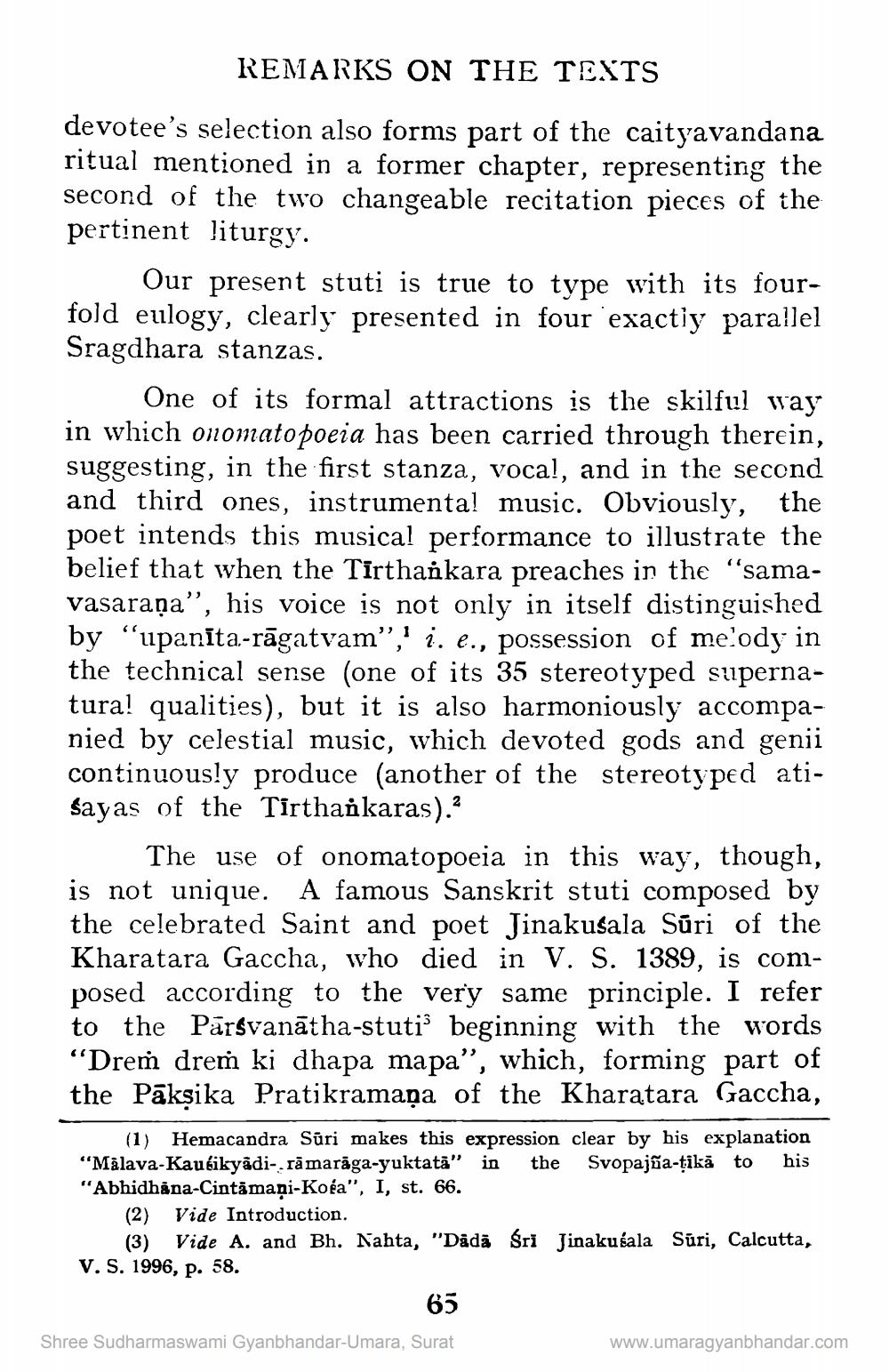________________
REMARKS ON THE TEXTS
devotee's selection also forms part of the caityavandana ritual mentioned in a former chapter, representing the second of the two changeable recitation pieces of the pertinent liturgy.
Our present stuti is true to type with its fourfold eulogy, clearly presented in four exactly parallel Sragdhara stanzas.
One of its formal attractions is the skilful way in which onomatopoeia has been carried through therein, suggesting, in the first stanza, vocal, and in the second and third ones, instrumental music. Obviously, the poet intends this musical performance to illustrate the belief that when the Tīrthańkara preaches in the "samavasaraņa”, his voice is not only in itself distinguished by "upanīta-rāgatvam”,' i. e., possession of melody in the technical sense (one of its 35 stereotyped supernatural qualities), but it is also harmoniously accompanied by celestial music, which devoted gods and genii continuously produce (another of the stereotyped atisayas of the Tirthankaras).
The use of onomatopoeia in this way, though, is not unique. A famous Sanskrit stuti composed by the celebrated Saint and poet Jinakusala Súri of the Kharatara Gaccha, who died in V. S. 1389, is composed according to the very same principle. I refer to the Pārsvanātha-stuti beginning with the words “Drem drem ki dhapa mapa”, which, forming part of the Pākṣika Pratikramana of the Kharatara Gaccha,
(1) Hemacandra Sūri makes this expression clear by his explanation "Mälava-Kaubikyadi-.rāmarāga-yuktată" in the Svopajña-ţikā to his "Abhidhana-Cintamani-Kola", I, st. 66.
(2) Vide Introduction.
(3) Vide A. and Bh. Nahta, "Dadā Sri Jinakusala Sūri, Calcutta, V. S. 1996, p. 58.
65
Shree Sudharmaswami Gyanbhandar-Umara, Surat
www.umaragyanbhandar.com




